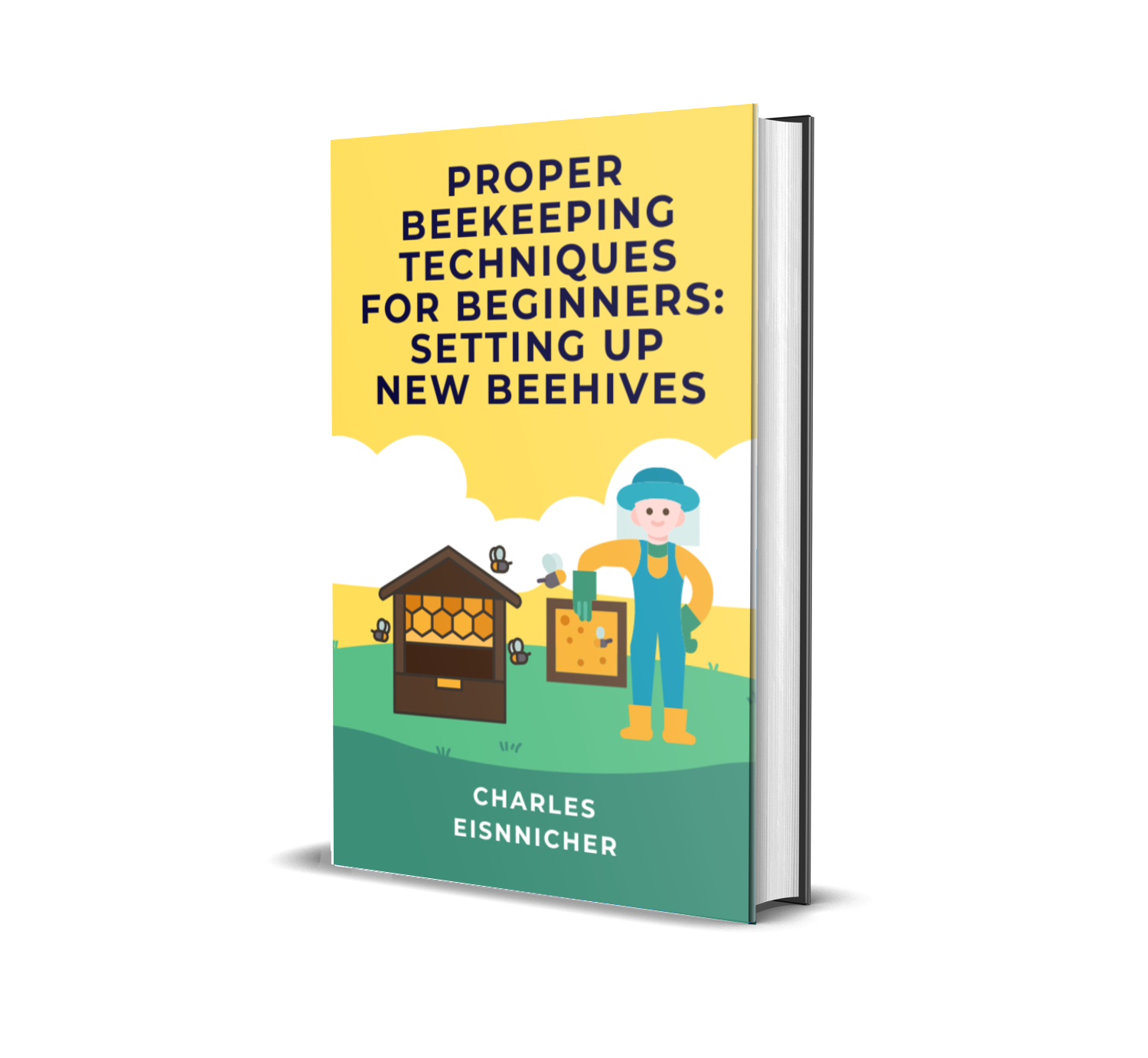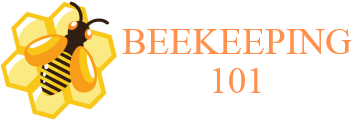As the temperatures drop and the days get shorter, beekeepers must begin the process of winterizing their beehives. This is an essential task in order to help ensure the survival of bees in colder climates.
Winterizing involves a variety of steps such as cleaning and packing the hive, monitoring for signs of pest infestations, checking for mite counts, and applying supplements to the hive to help the bees survive the cold winter months. By following these steps, beekeepers can help ensure the health and safety of their bees during the winter season.
Wrap up your bee hives for the winter! With the steps outlined in this article, you will be able to winterize your bee hives in no time. We will walk you through the process and provide you with useful tips to keep in mind as you take each step along the way.
This guide will enlighten you on everything you need to know so your bee hives can stay healthy and happy through the coldest months of the year. Read on to get all the details!
Table of Contents
Supplies Needed for Winterizing Your Bee Hives
Winterizing your bee hive is important to keeping your colony safe and healthy during cold weather. It’s an important step in the queen rearing process and in keeping your hardworking honey bees from succumbing to winter losses.
You’ll need the following supplies: an extra deep hive body (the deeper, the better), an inner cover, a telescopic cover, hardware cloth, insulation, insulation blankets, wood ash, marshmallow plugs, and a top feeder. Double check for all these items before winter sets in and make sure to remove any excess moisture.
With the right supplies and maintenance, you’ll be well on your way to providing a safe and secure overwintering home for your bee colony.
Inspecting Your Bee Hives for Damage
Before winter sets in, it’s important to inspect all of your bee hives for any signs of damage. You’re looking for holes or cracks in the wood, as well as other signs that the hive might not be sufficiently protecting the bees from the cold.
If the hive is in disrepair, the bees might need a new home or the hive might need to be repaired with new materials. It’s best to do this during the day when more bees will be out investigating the hive, and have a beekeeper inspect your hives too to make sure they will be ready for winter.
Inspecting now could save your bees from a tough winter and ensure they are healthy and thriving.

Get A Free Downloadable Ebook To Teach You How To Set Up New Beehives
Give Me My Free eBookAssessing the Bee Population
The bee population is vitally important to the health of ecosystems and human civilizations, as it is responsible for pollinating much of the food production in the world. Assessing the health of these populations is a difficult task, as many of the factors that influence the populations (disease, climate change, pesticides) are either difficult to measure or cannot be easily tracked in real-time.
Nevertheless, scientists are making tremendous efforts to monitor and assess the health of bee populations, incorporating a variety of monitoring techniques such as counting the numbers of bees of a particular species at a given location, observing the type of resources they are accessing, or testing pollen for environmental contaminants. Through these varied methods, scientists are hoping to gain better insight into the overall health of bee populations, which will be essential to help mitigate the dangers they face.
Securing the Entrance of the Hive
Securing the entrance of the hive is an important task for the beekeeper since this is where the hive is the most vulnerable to intrusion. The entrance needs to be the proper size table for the bee species being managed, located in the proper direction in relation to the sun, and blocked to entrance of unwanted predators and pests.
Placing physical structures such as guard walls and entrances over the opening can be very effective in reducing pests; while certain types of metal guards have also been found useful, particular the kind with wire mesh at the smallest width. Ultimately, if done correctly, the entrance should provide a balance between providing adequate protection from predators and pests, and allowing the bees to move freely in and out of the hive.
Pest Control for Winterizing
Your HomeWhen winterizing your home, pest control should be a top priority. Although the cold temperatures drive most pest activity indoors, rodents, insects and other critters can be lurking in the corners of an unwatched home.
To ensure your home is winterized against pests, start by cleaning up any clutter or messes that have accumulated in the months prior. Seal cracks and other entrances so that pests remain kept outside where they belong.
Place snap traps along the perimeter of your home, as well as in rooms like the kitchen or pantry. Lastly, use a specialized pest control treatment.
Ask your local home improvement store for the best option for your specific pest problem. Proactively winterizing against pests can keep your home, and your family, safe this season.
Protecting the Hive from Extreme Temperatures
Bees are essential to ecosystems, yet are vulnerable to extreme temperatures. It is important to protect the hive from temperatures that are too high or too low.
During summer months, hives may need to be shaded with a tarp or other material to prevent temperatures from reaching dangerously high levels. In colder months, hives must be insulated to avoid hot and cold drafts.
If temperatures drop below freezing, the bees will not be able to disperse their heat in order to survive. Careful attention must be paid to the placement of the hive, temperature extremes can be lessened when the hive is kept away from direct sunlight or in a sheltered, shaded area.
Preparing Feed Stores for Winter
It’s important for feed stores to properly prepare for the winter months. This means stocking up with enough products to meet customer needs and ensuring delivery is reliable and on time.
It also means making sure employees are properly trained to guide customers through their purchasing decisions and handle any customer concerns. Feed stores must also be sure that their inventory remains properly organized and secure during the winter months, as weather conditions can make the job significantly more difficult.
Lastly, investing in high-quality equipment to help manage and store products is always a wise move to keep operations going smoothly during the colder months.
Heating the Hive
The process of keeping honey bees warm in winter months is known as heating the hive. A proportion of the hive’s normal heat loss is compensated for by blankets covering the hive body, or simply by shading the hive from sun and wind.
Insulating method, such as bubble wrap, which is wrapped around the hive, is also used as an extra layer of protection from winter weather conditions. An external heat source, such as a heated stone or a brooder, can also be used to directly provide heat in the form of infrared radiation.
Ultimately, it is up to beekeepers to decide on the best and safest method for heating the hive.
Checking the Hive During the Winter
Checking the hive during the winter months is crucial for the health and survival of honeybees. It’s important to observe your hive for changes in temperature and make sure your hive is well insulated so the bees are kept warm.
Furthermore, checking for pests such as small hive beetles, wax moths, or varroa mites is also important, as infestations can cause imminent colony death. Make sure to feed your bees a bit of honey if there is a lack of nectar and pollen sources in the area so they can concentrate their energy on staying warm during the colder months.
Finally, check the bee colony regularly to monitor bee populations and make sure the queen bee is healthy.
Preparing the Hive for Early Spring
Early spring is an exciting time for beekeepers, as the hive is preparing for a new season of activity. Preparing for early spring involves a few key steps.
To begin, remove any debris or dirt from the hive using a beecomb. The hive should be thoroughly inspected for any signs of disease, damage or pests.
On warm days the bees may be seen outside the hive, flying and gathering food. They should be given access to an ample supply of water.
Frame by frame, inspect each comb for pests such as wax moth larvae. The hive should also have a sufficient wax supply or a pre-treated wax should be added to replace any that has been lost or consumed.
Finally, ensure that the entrance to the hive is free from obstruction. By following these steps, the hive will be ready and the bees prepared for another season of activity in early spring.
In Short
Summer is coming to an end, and it’s time to prepare your hives for the winter. Follow these tips for winterizing your hives, and you’ll ensure that your valuable honeybees make it through the cold months safely.
Check your hives to make sure they aren’t leaking and consider wrapping them in a wind-resistant covering. Feed your bees and replace any empty frames or broken combs.
Make sure your hives are dry and free of dampness. Most importantly, stay up to date with the weather and make sure your bees have plenty of food to eat throughout winter.
With these methods, you’ll be able to keep your bees safe and healthy during the winter, ensuring a great start to the news season next year.
Charles

Get A Free Downloadable Ebook To Teach You How To Set Up New Beehives
Give Me My Free eBook










